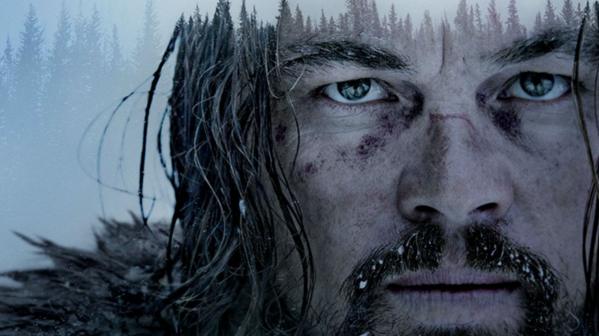As the history of great storytelling has reiterated time and time again, most lauded narratives tend to be fueled by revenge. Alejandro G. Iñárritu, once called Alejandro González Iñárritu, has proven this with his latest epic, The Revenant. Based on Michael Punke’s 2002 book, The Revenant: A Novel of Revenge, the tale centers around real life explorer and frontiersman Hugh Glass (Leonardo DiCaprio). The infamous story of his tango with a grizzly is in full effect onscreen as he gets tossed around like a limp piece of bread and fights the bear to its death–and nearly his own.
Barely clinging on to what’s left of his life, Hugh stays strong for the benefit of his half Native American son, Hawk (Forrest Goodluck). But because Captain Andrew Henry (Domhnall Gleeson), the leader of the group, has minimal resources and men in the wake of an abrupt attack from the Arikara tribe, he offers to pay a handsome fee to the men who volunteer to stay behind. Hawk and Jim Bridger (Will Poulter) both eagerly agree to stay, but so does the more dubiously intentioned John Fitzgerald (Tom Hardy), who has, up to this point, expressed nothing but contempt for having to carry around Hugh’s dead weight. In too much of a hurry to question Fitzgerald’s motives, Andrew and his remaining men head back to camp where they can assess a new strategy.
As the days go on, Fitzgerald grows increasingly impatient in waiting for Hugh to die, deciding to take matters into his own hands when Hawk and Jim are distracted with other tasks. Asking Fitzgerald to blink if he wants to be put out of his misery with dignity, Hugh keeps his eyes wide open, only to have Fitzgerald try to suffocate him anyway. Hawk comes to Hugh’s rescue before it’s too late, screaming out for Jim to help him, but not in time–Fitzgerald murders him in cold blood right in front of Hugh. The pain of watching his son die brings a new kind of life force to Hugh, still immobile from his wounds, but experiencing more mental clarity than ever. Unable to speak after the bear slashed his neck with its claws, Hugh can only make horrified noises as Fitzgerald talks Jim into leaving him behind due to the falsified looming threat of the Arikara.
Half-buried alive and left for dead, Hugh begins to pick up the pieces of his fledgling health in order to claim the vengeance that will drive him for the rest of the film. In many ways, it bears undertones of the Beatrix Kiddo narrative in Kill Bill: Vol. 1 and Kill Bill: Vol. 2. Indeed, The Revenant has been compared to yet another Tarantino movie released at the same time, The Hateful Eight. But apart from the snowy landscapes and taking place in the same century, The Revenant differentiates itself with how much it is driven by the single desire of its main character. Willing to endure any of nature or man’s hardships–even when it means ripping the innards out of his dead horse and crawling inside of it for warmth–Hugh will do whatever it takes to avenge his son.
Set against the sparse yet visually rich backdrop of the South Dakotan mountains, cinematographer Emmanuel Lubezki brings the desolation and ominousness of the uninhabited (by white men) land of the Louisiana Purchase to life with every heavy footstep Hugh takes toward getting closer to Fitzgerald. In the end, however, revenge doesn’t seem half as satisfying as it would be to have Hawk back by his side.





















